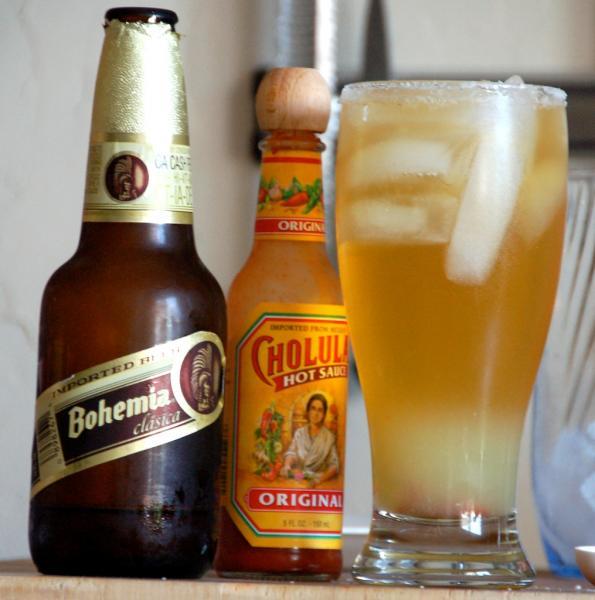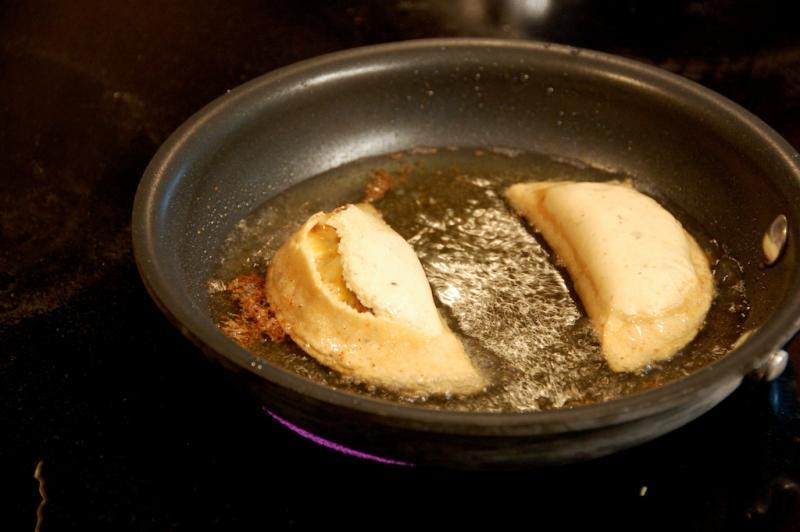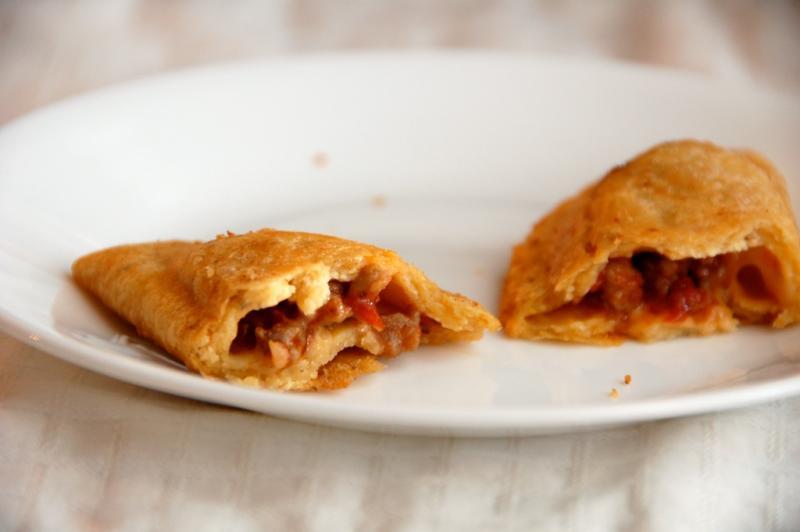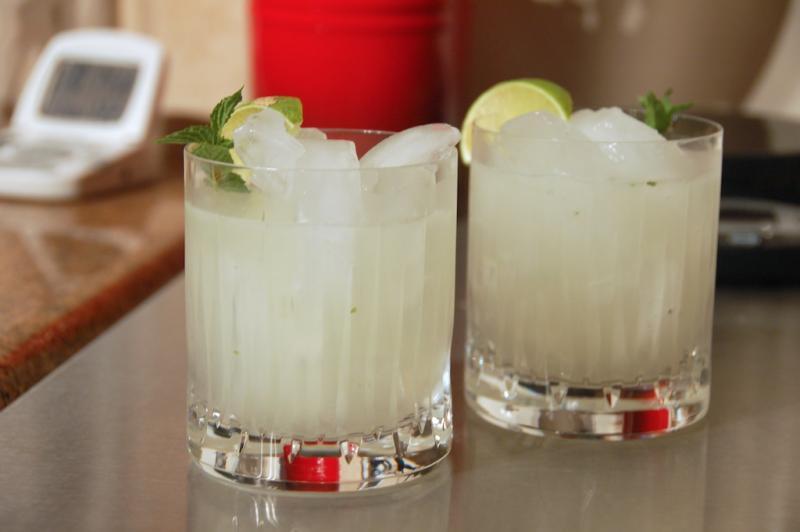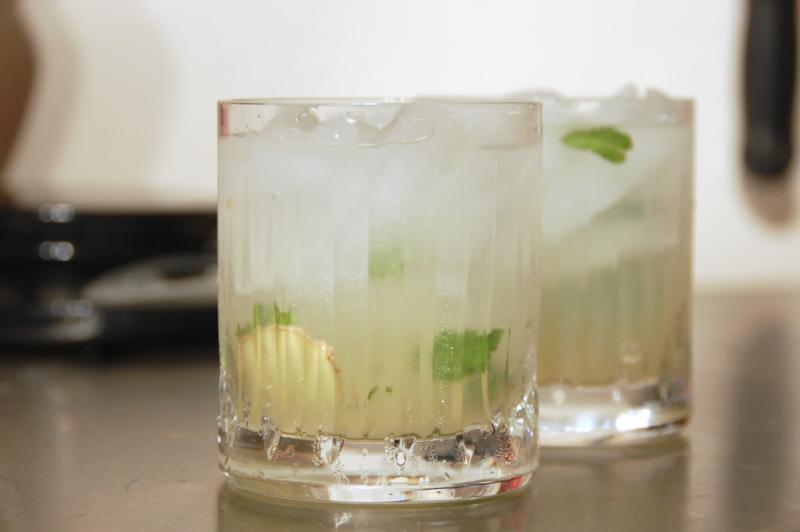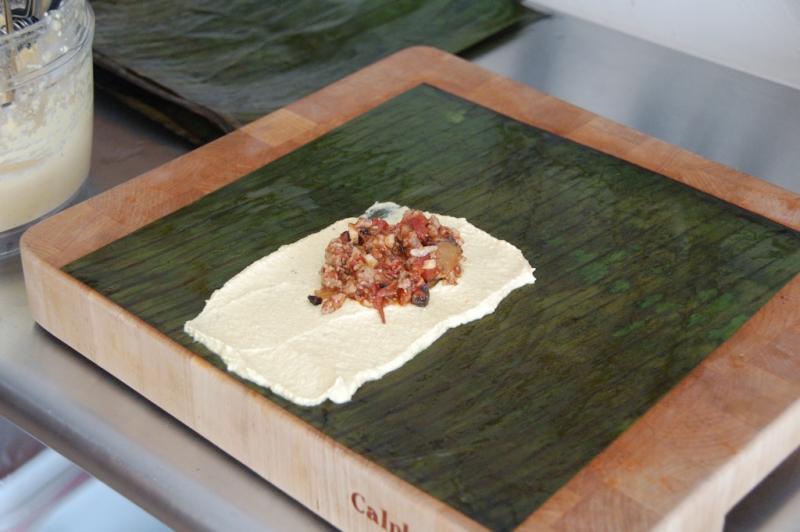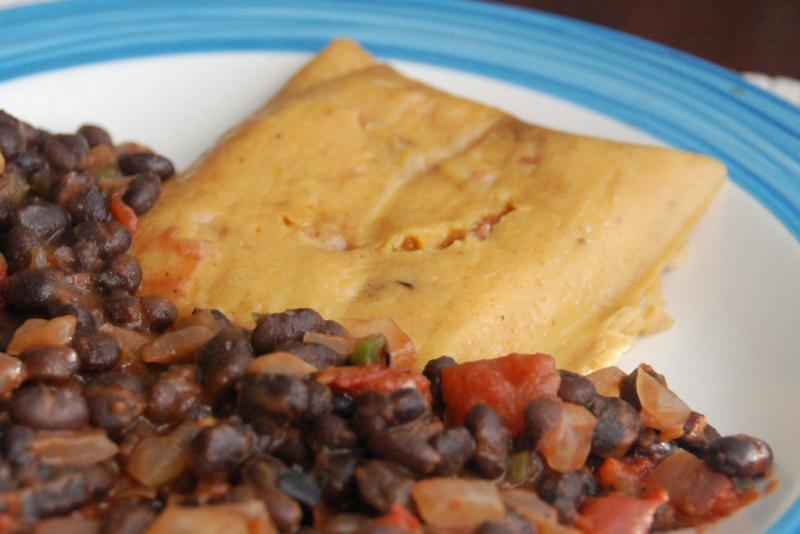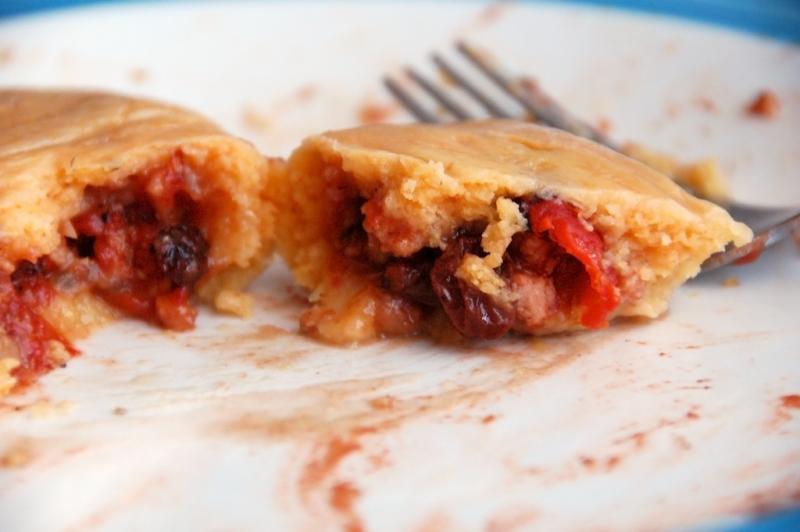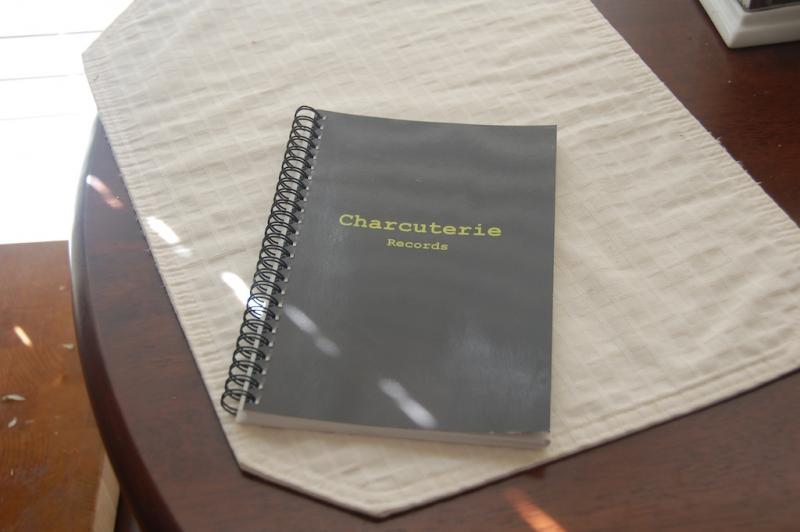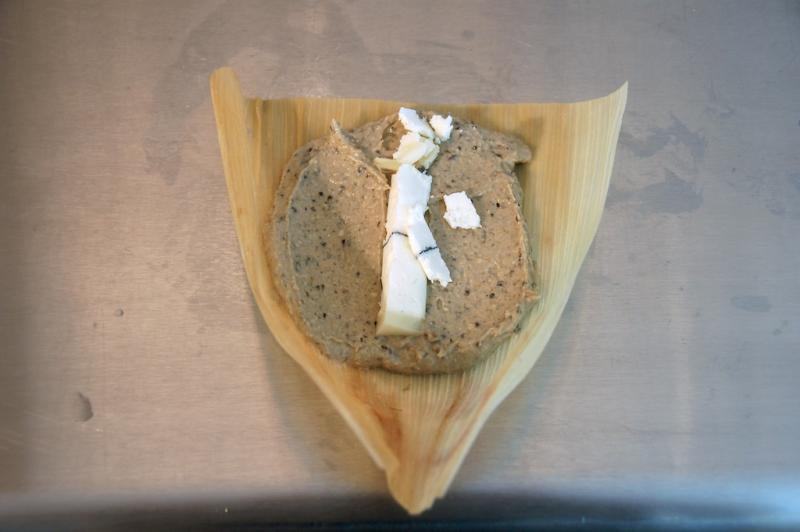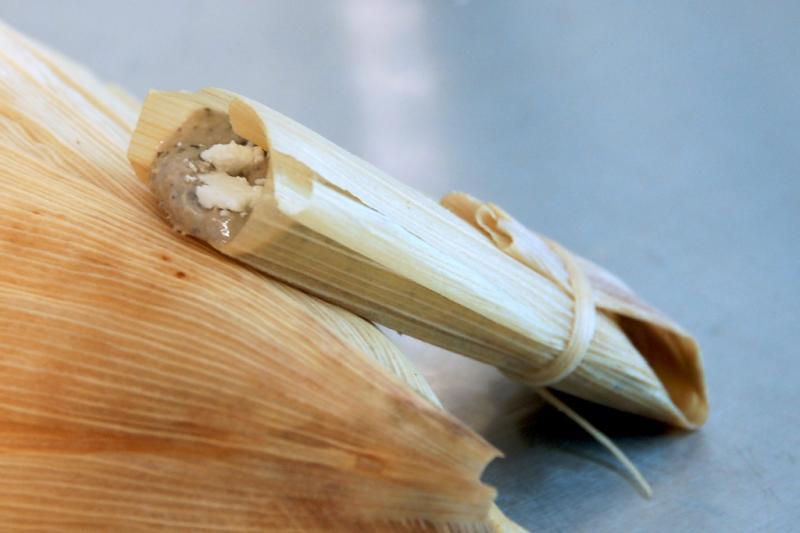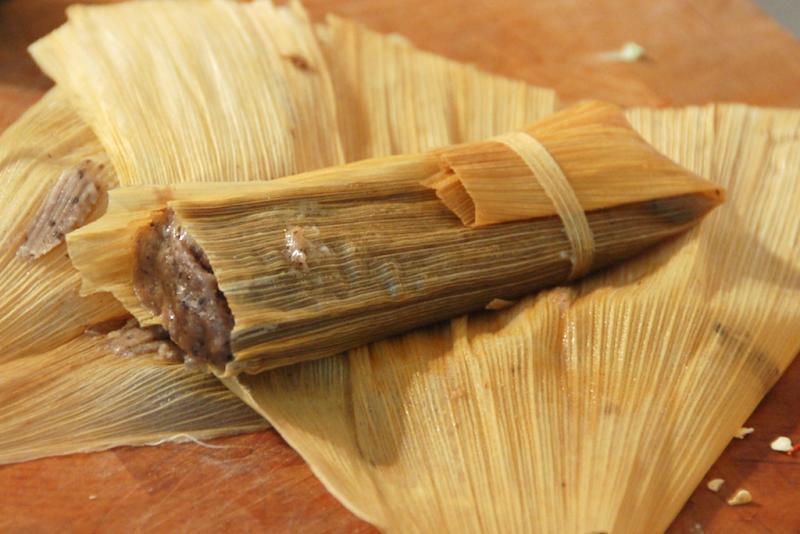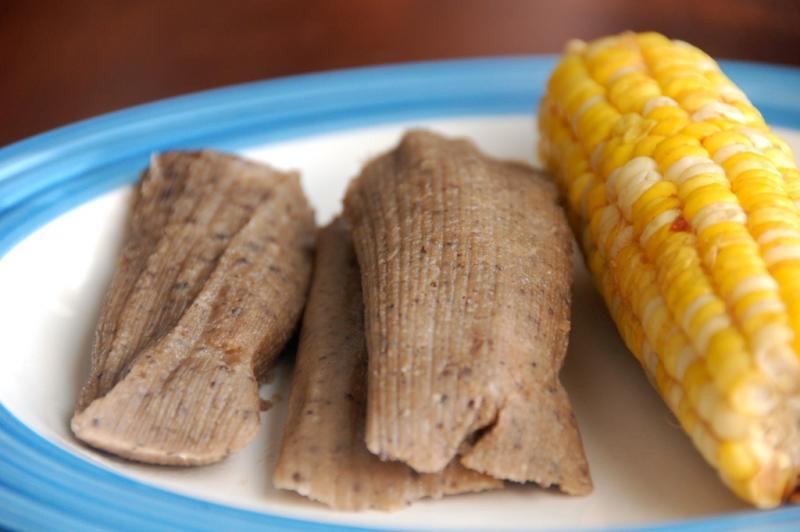-
Posts
10,190 -
Joined
-
Last visited
Content Type
Profiles
Forums
Store
Help Articles
Everything posted by Chris Hennes
-

Cooking from "Fiesta at Rick's" by Rick Bayless
Chris Hennes replied to a topic in Mexico: Cooking & Baking
Anna, if you don't like the food, you don't like it, not much to be done there! I would not choose this book as an introduction to Mexican cuisine, personally. I think Bayless's "Mexico: One Plate at a Time" is great for that purpose. Damn, it's hot here today. I'm barbecuing a pork shoulder, which calls for a beer. But that would be so boring, how about a beer with lime juice and hot sauce! Michelada (p. 56) I've never had one before, so I can't compare it to other recipes, but this is not my favorite drink in the world. It's OK, but I guess I just like a plain beer better. It's interesting to be sure, with the hot sauce adding a little zing, but probably not something I'll make again. (The photo is of the drink before stirring, but I stirred it up before drinking it) -

Sous Vide Supreme and other home options: 2009-10
Chris Hennes replied to a topic in Kitchen Consumer
How many steaks are you putting in there? I wouldn't think circulation would be terribly necessary for steak anyway, just curious. When are you going to try fish? That's much more sensitive. -

Sous Vide Supreme and other home options: 2009-10
Chris Hennes replied to a topic in Kitchen Consumer
Are you adding any circulation (e.g. an aquarium bubbler, etc.), or just using the machine as-is? -
Yes, that's it, I was just imagining a texture more like a cheese dip when you first said it. Now I see what you mean, sounds like lunch!
-
My picadillo isn't really the consistency of a "dip"—is that how you serve yours, or do you add something to it?
-
The danger of using a normal magnetic knife block is that you can nick the blade on the hard edges: these wooden ones Chris is talking about don't have that problem.
-
eGullet-friendly Amazon.com link. My pre-order is in, I'm really looking forward to this one.
-
Tonight for dinner I used some of the leftover Picadillo from this recipe and made some empanadas. I used the recipe from Mexico: One Plate at a Time for the empanada dough (he calls them fried quesadillas there). It worked pretty well, except I am always overfilling these things. I guess I don't make them enough, the filling seems so tiny when you are putting it on there... but if you add too much they explode, like so: I got some of them right, and even the exploded ones tasted good. Of course, I ended up using about three tablespoons of the picadillo, so I still need a solution for the rest...
-
David you need to get to the Minnesota State Fair if you want some fried goodness. They are crazy as can be (I know, I grew up there!) and the selection of random fried stuff is nothing short of incredible.
-

Questions About Quality of Extra Virgin Olive Oil
Chris Hennes replied to a topic in Kitchen Consumer
Who trained these testers, and what were they trained to test, exactly? It's sure not taste! The professional olive oil testers are essentially machines: they detect a chemical and say "I have been told this chemical is desirable" or "I have been told this chemical is undesirable." I'll take the Cook's Illustrated panelists any day, at least they are judging taste, if only their own. -

Cooking from "Fiesta at Rick's" by Rick Bayless
Chris Hennes replied to a topic in Mexico: Cooking & Baking
The chapter I am most willing to comprehensively analyze, perhaps several times, is the first: the one with the guacamole and booze. I like this chapter a lot... Champagne Margarita (p. 46) This is a really nice drink: the effervescence of the champagne (actually, I used prosecco...) is a great touch. The flavors are recognizable as a margarita, with that added bit of flair from the bubbly. I was skeptical at first that the drink as written would be too sweet again, but I used a quite dry prosecco, and I think the balance is quite good. If you have a sweet tooth you may need to ramp up the sugar a bit, either with a sweeter wine, or with a bit of sugar in the mix. One word of warning: this is not a shaken drink, it needs an hour in the fridge to chill. So if you need it RIGHT NOW, as I did, you need to find an alternate chilling method. I knew all those thermodynamics classes must have been good for something... -

Cooking from "Fiesta at Rick's" by Rick Bayless
Chris Hennes replied to a topic in Mexico: Cooking & Baking
I was sort of hoping someone else would start in on chapter 2, actually . I can only make so many ceviches before I've exhausted my political capital with my wife: she'll eat them, but she's not a big fan. Same goes for anything with shrimp in it. And the recipe that begins "dig a two foot deep fire pit in your backyard." (I'm not kidding, that's how the recipe starts). Someone else can have that one, too. Come on, who's in? -

Cooking from "Fiesta at Rick's" by Rick Bayless
Chris Hennes replied to a topic in Mexico: Cooking & Baking
Last night we tried a couple more drinks from the book: trying to trim back the mint from taking over the garden... Mexican Mojito (p. 52) A Mojito made with tequila: pretty good, actually. The recipe as given is quite sweet, but that's probably appropriate for a party. As my wife put it: "this is good, but I'm going to need another one in three seconds." Sizzling Mojito (p. 53) This is the same as the Mexican Mojito, but instead of using plain simple syrup (sugar water) to sweeten, you use a simple syrup that includes fresh ginger and habanero. I found the habanero to be too subtle to really "sizzle" here, and would probably increase the quantity next time. But again, for a party, the recipe as given is probably appropriate. You also muddle some ginger in with the mint: I didn't bother to peel the ginger first, and probably should have. -

Questions About Quality of Extra Virgin Olive Oil
Chris Hennes replied to a topic in Kitchen Consumer
What Dakki said: there is no immutable law of the universe that says "all oxidized fats taste bad in any quantity." My argument here, and that used by the tasters at Cook's Illustrated (who, while I have my disagreements with them at times, are hardly random schmucks off the street: these are educated palates), is that "Extra Virgin" is pure marketing and has nothing to do with whether the oil tastes good or not. So I have a hard time getting riled up when it turns out to be even more meaningless than I had first assumed. The real crime here is olive oil producers attempting to convince consumers that bitterness is a sign of quality to be prized, when the fact is it simply doesn't taste very good, but lasts longer on the shelf. -

Cooking from "Fiesta at Rick's" by Rick Bayless
Chris Hennes replied to a topic in Mexico: Cooking & Baking
Kalypso, you are a freaking genius. I had never thought to look for fresh-rendered lard until you mentioned this, but this morning after my usual supermarket run (it's just a big-box supermarket in a hispanic neighborhood), I went down the street to the mercado (after brushing up on my Spanish so I knew I was looking for "manteca"). There, in the back corner, were dozens, maybe hundreds of still-liquid two-pint deli containers of pure gold, rendered this morning, selling for $2 each. Holy crap. I hate rendering lard so much, this is a HUGE find. I owe you one! -

Questions About Quality of Extra Virgin Olive Oil
Chris Hennes replied to a topic in Kitchen Consumer
The study specifically points out that they are not concerned with adulteration with non-olive oils: So I am more concerned with the misleading marketing of the olive oil companies, on two fronts: one, that extra virgin is better in any conceivable sense, and two, that even when they label things extra virgin, they often are not, despite being priced accordingly. I agree that it is fraud to label something EV when it is not, but the definition of EV is not a taste-quality standard, but rather a shelf-life-quality standard. And so while I resent paying more for an oil that is not technically "extra virgin" in the end I don't really care if it's EV, if it tastes good. Which none of these studies are testing. -

Cooking from "Fiesta at Rick's" by Rick Bayless
Chris Hennes replied to a topic in Mexico: Cooking & Baking
A different sort of tamales altogether tonight: Tamales de Elote con Picadillo (Pork Picadillo Sweet Corn Tamales) (pp. 220–221) The batter of these tamales is very different than others I'm familiar with, consisting of almost equal parts pureed sweet corn and masa. It has a very nice texture, and a sweet flavor that I'm sure would go over well at parties: these will appeal to a broad range of tastes. The pork picadillo recipe is very good, thought I probably would add more vinegar next time to counteract the sweetness of the fire-roasted tomatoes and raisins, and to provide a better contrast with the sweet batter. Overall though, very nice tamales, and relatively easy to make, as tamales go. If you compare this last photo to the one in the book, you will notice a difference in the texture of the pork. The recipe calls for coarse-ground pork, which I used, but the photo seems to be more shredded than ground. My guess here is that the way Bayless actually makes it is to cook the pork in larger chunks and then shreds it, rather than grinding it. I don't know why he doesn't call for that in the recipe. Ground worked fine, but I may shred next time just to try it out. -

The Ice Topic: Crushed, Cracked, Cubes, Balls, Alternatives
Chris Hennes replied to a topic in Spirits & Cocktails
The ice crystals are going to form differently depending on what else is in there with the water: if you are getting lots of shard formation i would guess that you have more particulate matter in your water that is seeding the crystal formation, so instead of a cube being more or less one big ice crystal (the ideal case), you have lots of tiny crystals held together relatively weakly. I would think that filtering your water would resolve this issue pretty easily. -

Questions About Quality of Extra Virgin Olive Oil
Chris Hennes replied to a topic in Kitchen Consumer
In particular, from the executive summary: The interesting thing to me is the fixation of the public on the implied quality distinction between "virgin" and "extra virgin": it is often assumed that "higher quality" olive oil must taste better. But it turns out that this is not the case: from the Cooking Issues blog: It seems to me that this is like giving a Twinkie top marks in a dessert contest because it will last longer on the shelf: obviously, it's "higher quality"! -
The mention of mayo is interesting to me: I don't use any in my tuna melts. I shred the cheese and mix it in with the tuna: when it melts, it holds everything together just fine.
-
My wife got me a journal for my charcuterie work, where keeping good track of the variations between curing processes is the only way to diagnose problems, or identify flavor trends:
-

Cooking from "Fiesta at Rick's" by Rick Bayless
Chris Hennes replied to a topic in Mexico: Cooking & Baking
It was definitely a nice use for a bit of leftovers at any rate: really, Bayless should have included a section on what to do with all the food leftover from your fiesta. Since if there is not food left, you didn't make enough! Tonight I made a batch of tamales using some of the lard I've been saving up. It's hard to get fatback here, so I render mine from bellies. This lard has much more flavor than the commercial stuff in the tubs, which is essential to good tamales where that flavor comes through so clearly. Tamal de Frijoles Negros con Queso de Cabra (Black bean Tamales with Fresh Goat Cheese) (pp. 212–213) These tamales are interesting: the black beans are not used as a filling, but are incorporated directly into the tamale batter. My one issue with the recipe is that it says to add liquid to the tamale batter until it "reaches the consistency of cake batter." I've made more than a few cakes in my day: what kind of cake batter, Bayless?! That's a pretty damn hazy consistency, if you ask me. I just made the batter to the same consistency I'd been taught for other kinds of tamales, which is probably actually a bit thicker than the "cake batter" he is referring to. Turned out fine, I think the texture of the batter part of these tamales is very good. I also cheated a bit and actually used a 60-day aged goat cheese (Humboldt Fog), rather than the fresh the recipe calls for. What can I say, I love Humboldt Fog. It tasted good, but I should have used more of it. In terms of flavor I was surprised how little of the bean was evident: they tasted mostly like normal tamales, with a goat cheese hit in the middle. Not a bad flavor, just nothing terribly unique. Texture-wise, I would have preferred some contrast between the batter and the filling: goat cheese has about the same texture as the cooked batter, so it was uniform all the way through. I think using some whole black beans in the filling would have been a nice addition. As a side note: I get why there is no photograph of these in the book... they are not the most photogenic of Mexican foods... That corn was just added to the tamale steamer near the end of the cooking time, and then rubbed down with the Chiptle-Cumin Butter in Janet Zimmerman's recent NPR article (JAZ here on eG) . -
I had forgotten how good Humboldt Fog was until I made goat cheese tamales for dinner tonight. Some of the cheese even made its way into the tamales!
-
Still, it seems like by the time you've purchased the BGE and all the accessories, you have spent an awful lot of money. And then, How much of a learning curve are we talking about here? How much time would you say it takes to become a BGE master?
-
Seems like a marketing opportunity for some company to come out with a 100% whole wheat bread and then mock the others for their lameness. Does such a product exist?


